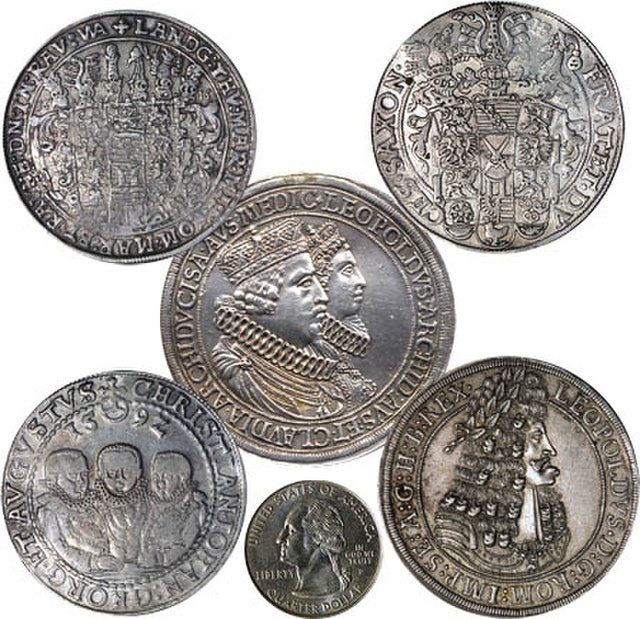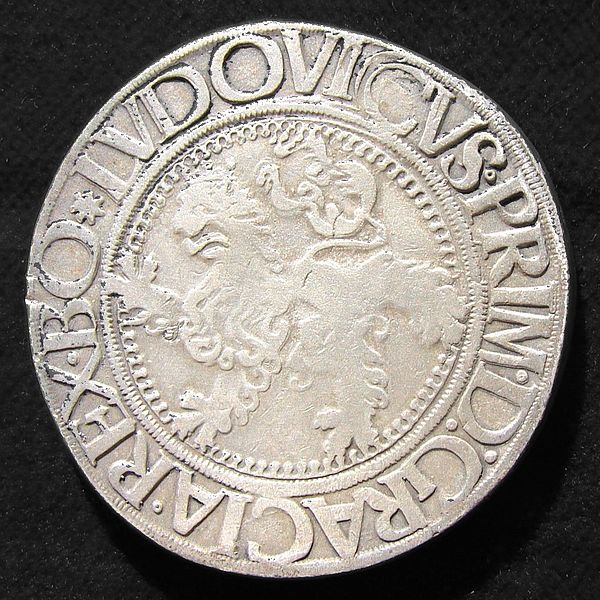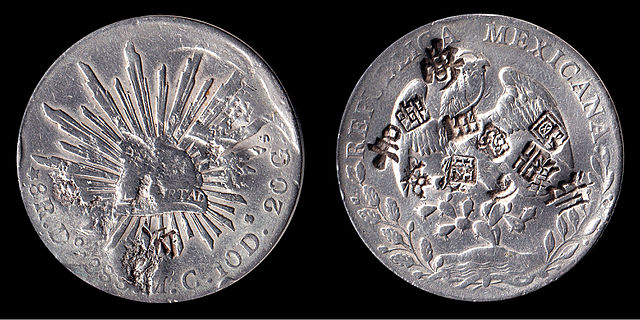A thaler or taler is one of the large silver coins minted in the states and territories of the Holy Roman Empire and the Habsburg monarchy during the Early Modern period. A thaler size silver coin has a diameter of about 40 mm and a weight of about 25 to 30 grams. The word is shortened from Joachimsthaler, the original thaler coin minted in Joachimsthal, Bohemia, from 1520.
Four thalers and one double thaler, compared to a U.S. quarter (bottom center): Clockwise from top left: Saxe-Altenburg 1616 (reverse), Saxony 1592, Austria 1701 (obverse), Saxony 1592 (obverse), Center: double thaler, Austria 1635 (obverse).
The 1486 Guldengroschen (obverse)
Obverse
Reverse
Silver coins are one of the oldest mass-produced form of coinage. Silver has been used as a coinage metal since the times of the Greeks; their silver drachmas were popular trade coins. The ancient Persians used silver coins between 612–330 BC. Before 1797, British pennies were made of silver.
Silver drachma from the island of Aegina, after 404 BC
Dirham minted in the name of the Aghlabid ruler Ibrahim I (800-812) and the Abbasid Caliph al-Ma'mun (813-832). It is similar to regular Abbasid dirhams but showing early signs of emerging independent coin types.
A silver coin made during the reign of the Mughal Emperor Alamgir II
1888 Mexican 8 Real coin with Chinese chop marks








